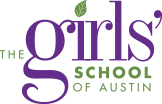
Every year GSA sends representatives to the National Association of Independent’s School’s People of Color Conference. We caught up with the 2018 GSA attendees, Lorna Torrado and Jenny Sparks to learn more about the conference and their experience.
What is the People of Color Conference?
The NAIS People of Color Conference is put on annually by the National Association of Independent Schools. The mission of the conference is to provide a safe space for leadership and professional development and networking for people of color and allies of all backgrounds in independent schools. This year’s conference was held in Nashville, Tennessee and the theme was, Equitable Schools and Inclusive Communities: Harmony, Discord, and the Notes in Between. The conference includes pre-conference seminars, general sessions with keynotes, dozens of practitioner-led workshops, extensive affinity group work, and dialogue sessions. GSA sends two representatives annually to the conference.
Why is it important for educators from independent schools to attend this type of conference?
The wisdom and perspective of people of color tends to be a “minority” view in independent schools, despite the fact that people of color comprise a world majority. Because of this, the NAIS People of Color Conference offers attendees the empowering experience of an interactional space that more closely mirrors world racial and ethnic demography, and the professional development scope and vision necessary to refocus their work and learning through an equity perspective. This is an inclusive space for educators to listen, share and learn from one another!
Describe some of the highlights from the conference this year?
One of our favorite speakers was Marion Wright Edelman. She is founder and president of the Children’s Defense Fund, 1st woman admitted to Mississippi Bar, where she directed the NAACP Legal Defense & Education Fund office.
What did you learn that you plan to bring back to GSA?
We learned more about the difference between cultural appropriation and cultural appreciation and how to apply a series of questions to decide between the two terms. We were able to do a presentation to the faculty on this topic during our workday. The list of questions is a fantastic tool to use when we are preparing our lessons. We also learned the difference between being an ACTOR, an ALLY or an ACCOMPLICE in different situations and ways to engage as an ALLY or an ACCOMPLICE (rather than a passive actor) in order to fight discrimination and social inequity.
How does increasing awareness around diversity and equity benefit all students (/all people)?
Diversity and difference within a community leads to higher productivity, increases acceptance and promotes high analytical thinking skills. In addition, it makes the world a better place for all to live in.
What was your biggest take away from this year’s conference?
We learned that it is important to keep having difficult conversations in order to become a stronger and more inclusive community. And we feel better educated and more comfortable and equipped to step up/into conversations that may arise around race or inequality of any sort.
